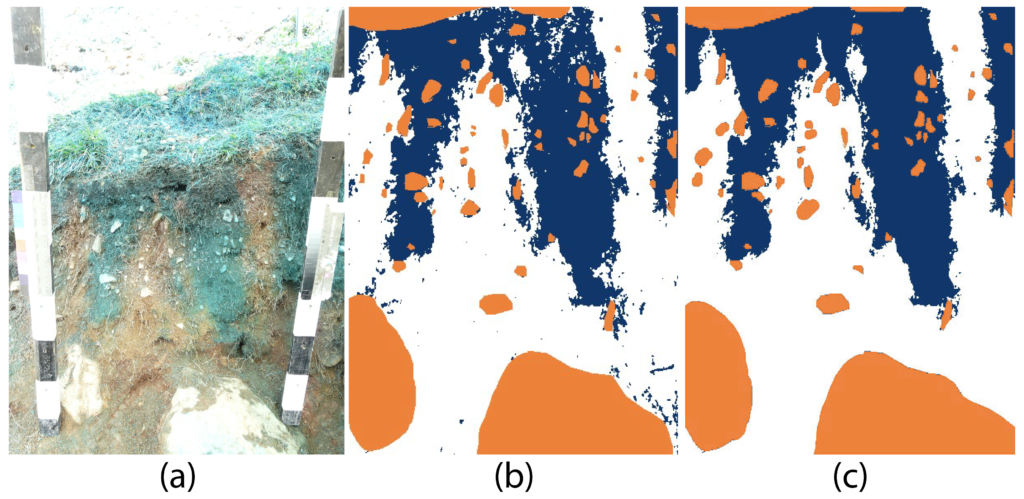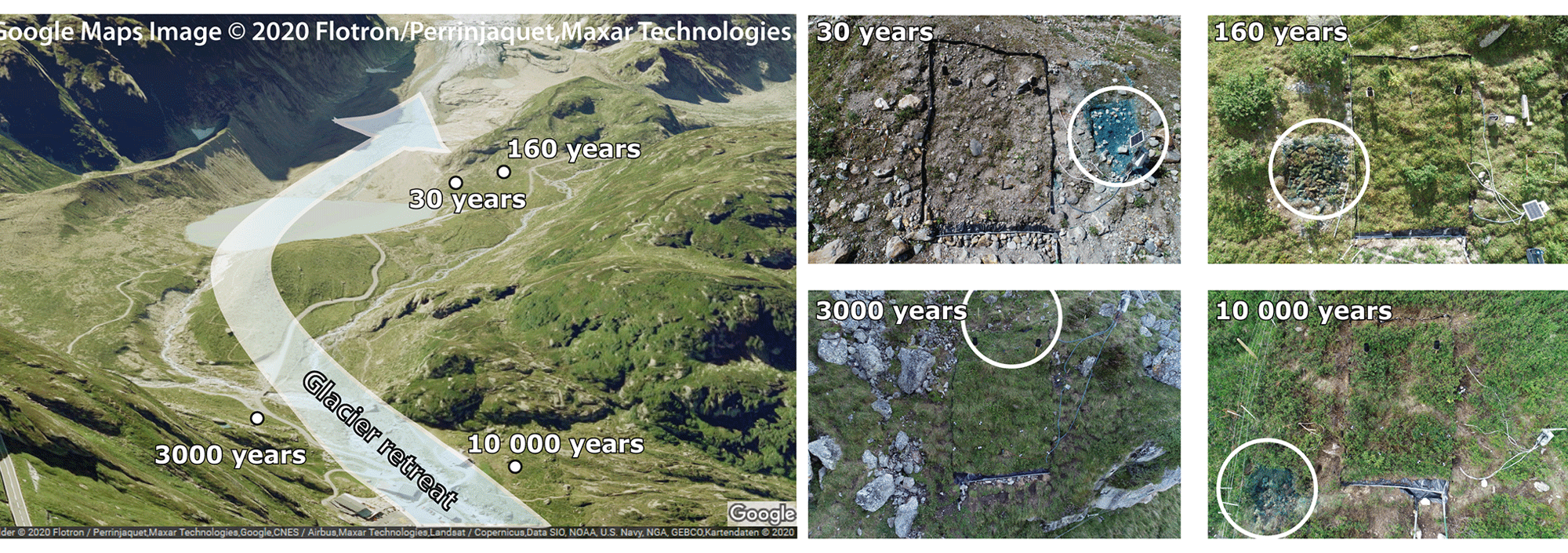Featured image: The Stein Glacier in the central Swiss Alps, where the study was conducted. Left panel © Google, right panels CC BY Florian Lustenberger in Hartmann et al. 2020.
Paper: Field observations of soil hydrological flow path evolution over 10 millennia
Authors: Hartmann , A., Semenova, E., Weiler, M., & Blume, T.
The way water flows through soil and sediments can be incredibly diverse. In the simplest case, water flows uniformly through all of the pore space between grains. Most soils act very differently though. Water moves quickly through certain pathways and not at all through other areas. This preferential flow of water has important consequences for the ability of the soil to hold water, and for the movement of nutrients and contaminants. Understanding what factors affect the evolution of preferential flow pathways can help scientists better understand how soils work now, and how they will respond to human induced changes into the future.
Soils evolve over long timescales, making their evolution difficult to observe directly. Instead, soil scientists have long made use of chronosequences—a set of sites with soils that have similar origins but began their evolution at different times. In a new paper, Anne Hartmann and colleagues look at how soil properties and preferential flow evolve over 10,000 years using moraines – lobes of sediment left behind by a retreating glacier. Though 10,000 years is a long time, it is still short in comparison to many studies of soil formation, which may study changes over hundreds of thousands of years.
The authors selected four moraines of different ages from the same glacier in Switzerland. Because vegetation is usually an important factor for the creation of large soil pores that water travels through, they also selected three sites on each moraine with different vegetation density. In order to understand how the water moves through the soil, they simulated rain by sprinkling water containing a bright blue dye across the surface. They then cut into the soil to see it in cross-section and used image analysis tools to identify areas that were stained. Narrow stained paths indicated that the water was moving through fewer larger connected soil pores, while wide paths indicated that it was moving through the whole matrix of the soil. They also performed laboratory analyses on the soil to determine its physical properties like its particle size and organic content.

The results showed significant changes in soil properties as the moraines age. Older soils tended to be composed of smaller particles and have higher organic content than younger soils. The soils are more finely grained mainly because of the physical breakdown of sediment with time, especially due to the extreme freeze and thaw conditions they experience. The growth and decay of plants is responsible for increasing organic content with age. Flow paths of water also changed significantly over time. Young soils had more uniform flow through the whole soil matrix, but weren’t very effective at retaining water due to their larger grain size and minimal organic content. In the oldest soils, a thick organic layer near the surface was most important for moving and storing water, while deeper below ground flow was concentrated in narrow pathways created by plant roots. The new results paint a picture of the complexity of interactions between water flow, soil development, and vegetation. By studying how soils develop through time, we gain a deeper understanding of how they store and release water, and how this might change with climate and other human impacts. The next time you are outside, you can think about the soil below your feet and the many thousands of years that it took to make it what it is today.
When space is time: evolving soil hydrology on glacial moraines by David Litwin is licensed under a Creative Commons Attribution 4.0 International License.

